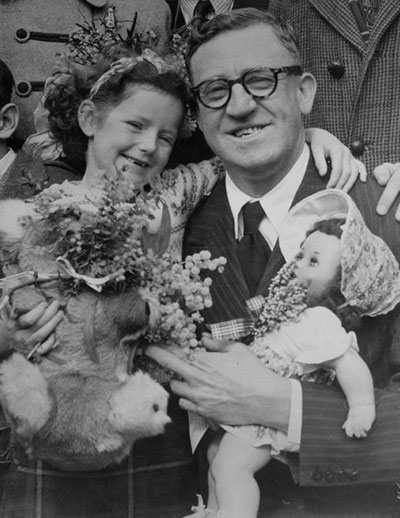The Australian Government's first stated reason for becoming involved in assisting the huge humanitarian drive to find homes for the thousands of displaced people in Europe was to increase Australian population to counteract any possible invasion from Asia.
Minister for Immigration and Information Arthur Calwell, serving under Labor Prime Minister Ben Chifley, impressed upon his parliamentary colleagues the gravity of the situation Australia found itself in as the Pacific War inched towards victory:
"If Australians have learnt one lesson from the Pacific war now moving to a successful conclusion, it is surely that we cannot continue to hold our island continent for ourselves and our descendants unless we greatly increase our numbers. We are but 7,000,000 people and we hold 3,000,000 square miles of this earth's surface . While the world yearns for peace and abhors war, no one can guarantee that there will be no more war. A third world war is not impossible, and after a period of fitful peace, humanity may be face to face again with the horrors of another period of total war."

View Caption
Calwell reflected the sentiments of many Australians, who had been badly shaken by the capture of thousands of servicemen and women by the Japanese during the war, and their subsequent imprisonment, harsh treatment and large-scale loss of life:
We must populate or we will perish. We must fill this country or we will lose it.
Calwell called for an increase in the birth-rate, which had all but stagnated in the Depression and the war, as well as controlled immigration. He stated his preference for British migrants, but by late 1946 he said Australia should consider taking in some of the displaced people from various European countries who were now stranded in Germany, Austria and Italy.
The government's reasons for increasing the population of Australia were not entirely because of a perceived threat from Asian nations; it was clear that the country would not progress economically with such a small population. The sluggish economy had to expand and there needed to be a huge investment in infrastructure and an influx of workers willing to man major new industrial projects, such as the Emmco factory in Orange.